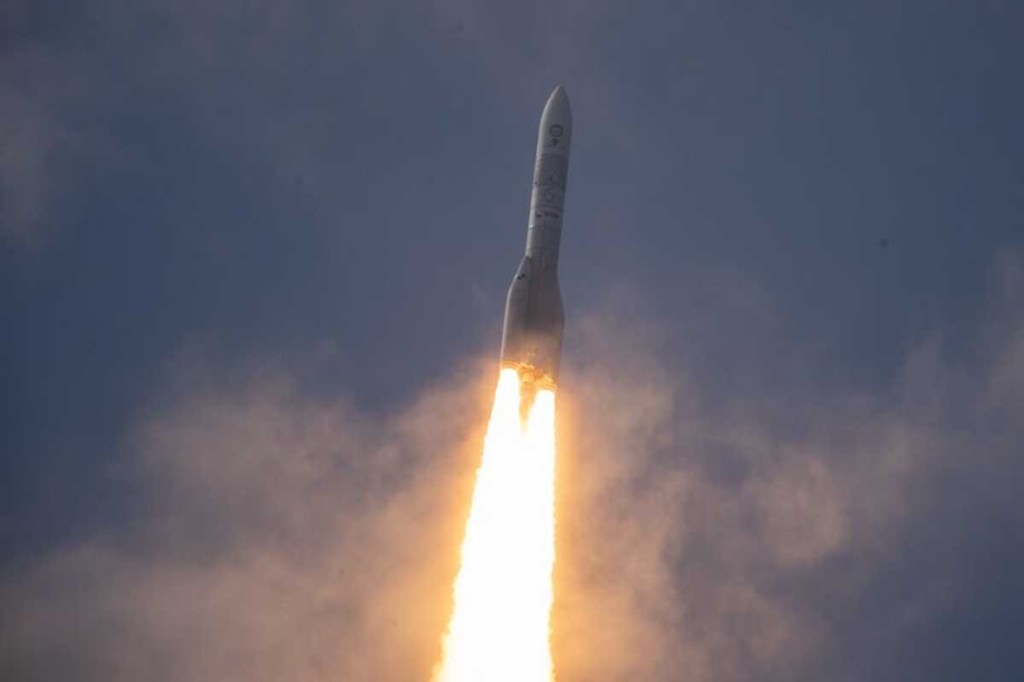OUR SPACE: Ariane 6 – a successful failure?
Published 11:28 pm Monday, July 15, 2024

- Europe’s new rocket Ariane 6 powered Europe into space, taking with it a varied selection of experiments, satellites, payload deployers and reentry demonstrations that represent thousands across Europe, fromstudents to industry and experienced space actors.
Last week the new European Ariane 6 rocket launched for the first time to much fanfare. And most of it went really well, until it didn’t. So what happened?
Trending
Ariane 6 is a big deal for European space exploration. It’s a result of decades of intense collaboration between some 600 companies from 13 different countries, and there were many delays along the way. Europe’s last heavy lift rocket, the Ariane 5, premiered some 30 years ago, and it was retired last year after 117 orbital missions, and Ariane 6 was supposed to take over long before then. But then COVID-19 happened, and design changes necessitated extended testing. In the launch business delays can add up very quickly.
But it finally all came together last week, and a gleaming white sleek Ariane 6 thundered into the sky for the first time. This inaugural mission was in the Ariane A62 configuration, where the “2” stands for two attached solid rocket boosters — there is also an A64 version with (you guessed it) 4 solid rocket boosters. On board were a number of test payloads, several small satellites and two capsules designed for atmospheric re-entry.
In terms of lifting prowess the Ariane 5 and 6 are nearly identical, but Ariane 6 will come at approximately half the price, once all the bugs are shaken out, due to new components and advanced manufacturing processes. Even so, it’s pricier than the comparable Falcon 9 from SpaceX, but the European Space Agency ESA is counting on Ariane 6 nonetheless, because it’s “homegrown,” and its development and use benefit all the ESA member countries, and that’s perfectly understandable.
Ariane 6 already has quite the backlog of missions — there are about 30 already on the books, which accounts for several years worth of launches, assuming the planned 12 launches per year. Some of them are pretty big tickets, like Amazon’s Kuiper satellite constellation, but SpaceX is currently dominating the market, with a launch every couple of days, so ESA is eager to profit from the current glut with guaranteed access to their own rocket.
But everything didn’t go 100% according to plan. While the launch was picture perfect and the rocket checked off one successful milestone after another, trouble set in later on when the booster’s upper stage malfunctioned. It was meant to start and stop several times to achieve the final orbit and it did so twice, but the third time it should down after a few seconds. While some of the satellites were released before that point and all was well for them, the remaining satellites and the two re-entry capsules weren’t so lucky, as they never reached the desired height and orbit.
This meant of course that the two re-entry capsules did not come down in the expected places and therefore they could not be retrieved as intended. That’s a real bummer of course, but let’s not forget that this was essentially a test flight of a completely new rocket. Companies who book orbital missions on a test flight such as this understand that their payload may not survive, let alone make it into the right orbit. Even so, the so-called anomaly will provide tons of data which will be analyzed very thoroughly and hopefully yield answers to what went wrong with the third stage.
Trending
The next Ariane 6 launch is slated for December, and over the next several years it will really ramp up, each year topping the numbers of the previous one. Let’s hope that the third stage problem was an isolated one and future launches will achieve their intended orbits. Space is expensive, as we all know, and increased competition will drive prices down. Besides, there can always be launch delays due to technical problems, and it’s a good thing if a time-sensitive mission has options to fall back on if the original booster becomes unavailable.
ESA rockets launch from Kourou Spaceport in French Guiana, a small country in northern South America on the Atlantic. It’s a “department” of France that’s conveniently close to the equator which makes it an ideal location for a launch site. While you can – in theory – launch a rocket into orbit from anywhere on the planet, the closer to the equator you can get the better. This is where Earth’s rotation is fastest, thus providing an extra free boost to rockets launching into the same direction, and saving you precious fuel, weight and money.
Learn more about Kourou Spaceport, the equivalent of Cape Canaveral for Europe, at https://www.esa.int/Enabling_Support/Space_Transportation/Europe_s_Spaceport and read more about Ariane 6 at https://www.arianespace.com/vehicle/ariane-6/
—Beate Czogalla is the Professor of Theater Design in the Department of Theatre and Dance at Georgia College & State University. She has had a lifelong interest in space exploration and has been a Solar System Ambassador for the Jet Propulsion Laboratory/ NASA for many years. She can be reached at our_space2@yahoo.com






